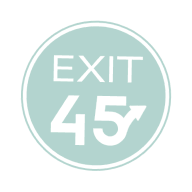Only 20 - 35% of Small Businesses Ever Sell
Your house will sell without planning. Even if you don’t spruce it up and eliminate clutter as any good real estate agent recommends, it will eventually sell. You may not maximize the selling price by your failure to plan, but you will receive offers that are worthy of consideration. The same holds true for your used cars. Even without advance planning, you will receive offers.
In my early days as a business broker, I refused to believe that statistic. I thought, “That’s outrageous, that can’t be true.” Well, it didn’t take long to figure out the statement is 100% correct, and while there are numerous reasons why, one stands out.
The #1 reason businesses don't sell is owners' failure to plan for a sale of their business
In our bi-weekly email newsletter series, How to Sell a Business, we identify 66 potential obstacles to the successful sale of a business. Obstacle #1 is owners’ lack of realization that forward planning is necessary to successfully sell a business. There may be up to 65 more obstacles that need to be overcome! First, those obstacles need to be identified, and then they need to be addressed. And that requires planning and time.
So, that’s what www.45dayexit.com is all about – encouraging you to understand the need to plan to overcome obstacles. To do so, you need to Overcome the Power of Inertia.
Overcome the Power of Inertia
The Power of Inertia strangles most small business owners. Typically, they become so involved in the day-to-day activities that they can't see the forest for the trees. They are so involved in details they don't take the time to see the bigger picture.
In physics, Inertia is defined as the tendency of a body at rest to remain at rest or a body in motion to stay in motion in a straight line unless acted on by an outside force. It is commonly defined as resistance or disinclination to motion, action or change. Nothing better describes what I perceive in most small business owners. On a daily basis, they are working so hard in their business that they don’t take the time to work on their business.
Those owners are in a state of Inertia. Most small business owners have the tendency to remain on their straight line and are resistant to change. A business may be somewhat successful in a state of Inertia, but it may not be saleable. There may be huge obstacles that prevent the possibility of a successful sale. The owner needs to Overcome the Power of Inertia, stepping back to see the bigger picture. As it reads in the definition of Inertia above, if he or she doesn’t actively work to Overcome the Power of Inertia, the business may be knocked off its straight line course of Inertia by an outside force such as issues with health, family, macro-economy, competition, technology, etc. If that occurs and forces the need to sell the business, but the obstacles have not been identified and addressed, the business may not be saleable.
Does your business represent 50 - 90% of your net worth?
Think about this. What percentage of your personal net worth is tied up in the value of your business? For the typical owner, the small business he or she owns represents 50% to 90% of personal net worth. In most cases, the business is potentially their largest asset. But, that is only true if the business can be sold.
The odds against a successful sale are 3:1
Remember, only 25% of small businesses ever sell! Is yours in the 25% that will sell, or is it in the 75% that won’t sell? The odds are 3:1 that a business won’t sell!
Now, I believe that 75% should be saleable. But, that assumes 100% of owners realize the need to plan for the sale of their business. (Based on experience, the true percentage that recognize the need to plan may be in the range of 10%.) If an owner understands the need to plan two to five years in advance of the desired exit date and executes a plan to identify and address the obstacles to a sale, those odds of 3:1 that it won’t sell can be reversed to 3:1 in favor of a sale.
Time is needed to overcome obstacles to a sale
It does take time to identify and address obstacles to a sale. Amongst those obstacles could be issues such as:
- Can you afford to sell the business? What will it take to allow you to comfortably retire in the lifestyle to which you’ve become accustomed?
- What is the estimated value of your business? How does that compare with your expectations? What needs to be accomplished to meet your expectations in value? How long will that take?
- What are the tax implications of a sale? Can the tax implications be improved? How long will that take? (In some instances, this can require a ten- year time frame!)
- Do you have issues related to inadequate cash flow, inadequate gross margins or inadequate sales and marketing? How long will it take to make improvement in those areas?
- Do you have adequate recordkeeping / accounting systems / financial reports? How long will it take to get those records in order?
- Do you have organizational depth – key second-level management employees? How long will it take to transition the employees to the point where the business might be able to run without your day-to-day involvement?
- Do you have customer concentration issues? How long will it take to diversify your customer base?
- Do you have issues related to your facility lease or real estate you own? How long will it take to address those issues?
- Do you have issues with regulatory authorities like franchisors, licensors, exclusive suppliers, etc.? How long will it take to resolve those issues?
- Have you run too many personal expenses through the business, or pocketed cash under the table to save on income taxes? How can those issues be addressed?
It is never too early to start the exit-planning process
Theoretically, you should have started to plan your business exit strategy the day you started or acquired your business. If you haven’t done so, it is never too early to start. If you delay, it may be too late. You should Overcome the Power of Inertia today and begin the process of identifying obstacles to the successful sale of your business.
Often a business sale is the largest dollar transaction an owner ever encounters
For most, selling a business is a one-time event for which they have no experience, and they are not afforded a trial run. It’s an emotional, time-consuming and complex process for which the owner’s financial security is at stake. Three results can occur:
With proper planning, significant wealth can be created
With inadequate planning, the business can be sold for far less than it might have otherwise
As happens more often than not, the business cannot be sold because the owner failed to Overcome the Power of Inertia and let the business run a downhill track for far too long
You must identify and address obstacles to a business sale
Quite frankly, most companies are not saleable because owners have unknowingly allowed obstacles to continue (and fester) in their business. The 2nd most important step in the process of planning the sale of a business is identifying the obstacles to a successful sale. That’s planning step #2, only because step #1 is the owner’s need to realize the importance of planning their business exit.
We have identified 66 obstacles to the successful sale of a business. To learn more, read Issue #23 – 66 Obstacles to a Successful Business Sale.
Our Mission
We strive to enable owners to “Overcome the Power of Inertia”; plan their business exit; improve the value of their business; and conquer the obstacles they face in selling their business.
To accomplish our mission, we have developed a series of free email newsletters to not only educate you, but to also remind you on a bi-weekly basis of the importance of “Overcoming the Power of Inertia” to occasionally “work on” rather than “work in” your business.


